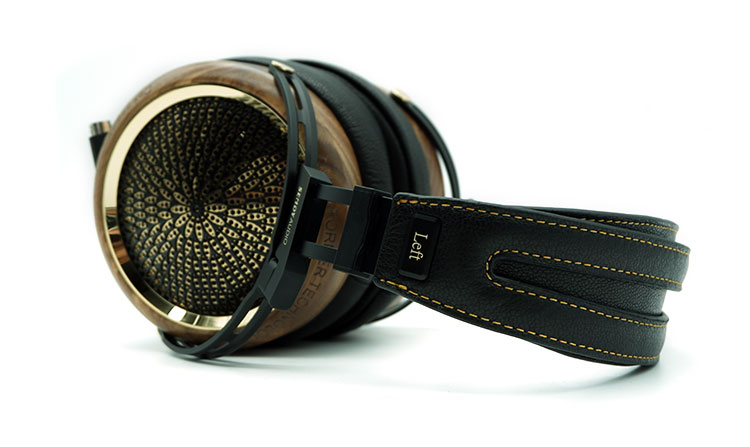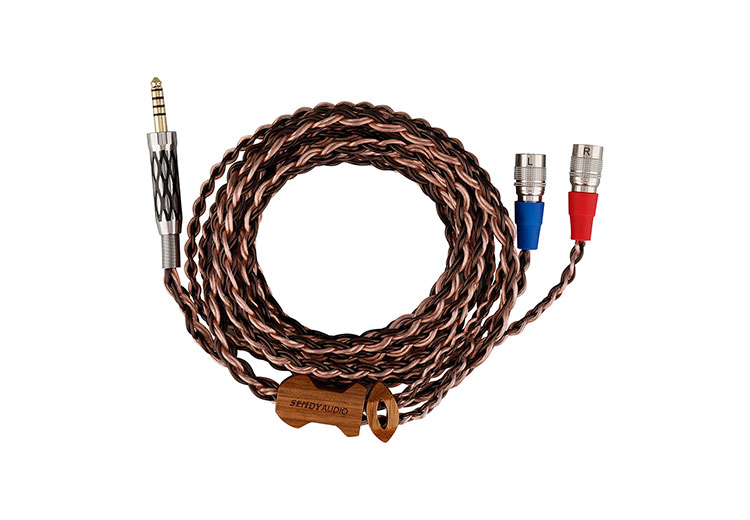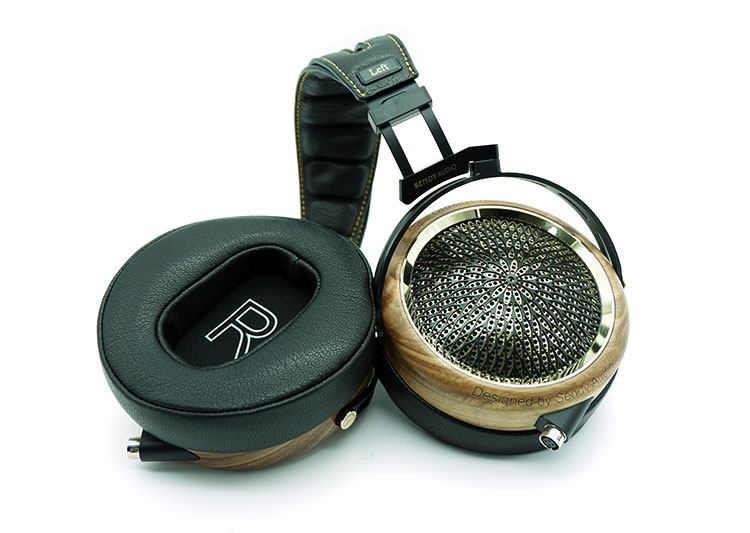The Sendy Audio Peacock is the company’s new flagship open-back circumaural headphones featuring an 88mm planar magnetic driver. It is priced at $1499.
Disclaimer: The SendyAudio Peacock sent to us is a sample in exchange for our honest opinion. We thank the team at Sendy Audio for giving us this opportunity.
To read more about Sendy Audio products previously featured on Headfonics click here.
Note, this 2-page review follows our new scoring guidelines for 2021 which you can read up on here.
When looking at headphones from both Sivga and Sendy Audio, it may seem a bit confusing, since both brands take on a similar aesthetic. That’s because both headphones come from the same brand, so some visual elements may be shared between the 2 brands.
We’ve had the privilege to review the company’s entry-level and mid-tier offerings, in the Sivga Phoenix and the Sendy Audio Aiva. Both headphones were found to be competitive for their respective price points.
This time, Sendy Audio has graciously sent over their top-tier planar magnetic headphone offering in the form of the new Peacock.
Tech Highlights
While the Peacock unmistakably takes visual cues from both the Sivga Phoenix and the Sendy Aiva, much more care has been taken in the design and implementation of the Peacock.
Starting with the driver housing, the design has been further refined with the position of the mounting screws and holes around the housing to ensure a uniform frequency response due to baffle resonance.
Inside, the Peacock utilizes an 88mm planar magnetic driver that is implemented with a Quad-former design. This means that it has dual-sided magnets with diaphragms that are double-sided as well. This ensures that the Peacock has low distortion and ends up having a live concert presentation.
The diaphragm material on the Peacock is made of proprietary material with a high damping factor which produces a natural and warm vocal presentation while having a solid bass line. This diaphragm material also allows the Peacock to extend into the 40kHz range.
Design
The general aesthetics of the Peacock is unmistakably from the Sendy Audio stable with its metal suspension headband and yokes with articulating hinges.
However, the design is taken up a notch with the Peacock. The headband is no longer a bare metal headband, instead, both the suspensions strap and the headband are wrapped in goat leather stitched with gold embroidery. The earpads are also made of the same goat leather.
Each earcup has a wooden ring, and the grills on the earcup consist of 2 unique layers. The first layer is made of a 24k gold plated perforated metal grill, while the outer layer is made of a black outer mesh with a pattern that’s meant to resemble a peacock spreading its tail.
The left and right markings are clearly marked out with badges on either side of the base of the headband. The cables also have a similarly clear channel marking etched on the Hirose connectors casings, as well as red and blue rubber tubes attached to the Hirose connectors for quick identification.
Cable
The cables that arrive with the Peacock is a premium grade cable, with an 8-core 6N purity OCC cable, with each strand of the cable coated in a PVC coating. Individual wires are braided tightly to ensure that the cable won’t unravel easily.
The cable itself is a 2-tone cable, with half the strands coated in a brown PVC coating contrasting the clear PVC coating which shows the pure copper inside. On the headphone side, the cable is terminated with a pair of Hirose connectors, which are the same as the ones found on Dan Clark Audio headphones.
The splitter is protected with a wooden enclosure, with Sendy branding on it, and does include an adjustable slider to customize the length of the split of the cables.
The jack is a 4.4mm pentaconn connection allowing the Peacock to be used in balanced mode with some desktop amplifiers and plenty of DAPs. They also provided the Peacock with 2 additional adaptors, one for balanced 4-pin XLR and the other for 6.35mm SE
Overall, the cable design on the Peacock is premium and well throughout. With the practical choice of termination and the adaptors for the more traditional terminations, the cable that comes with the Peacock allows it to be used with a wide variety of upstream gear right out of the box.
Comfort
The headband’s suspension strap system is made of soft foam covered in goat leather. This strap touches my head when the headphone is being worn, but it evenly distributes the weight across my head, so there are no particular hotspots.
Each earpad is made of soft foam, again covered with that soft goat leather. While it’s not memory foam, it still properly conforms to the sides of my head to make a proper seal. The earpad holes are rectangular and large enough to ensure that my ears don’t touch any part of the inner cavity walls.
While the Peacock is on the heavier side, weighing in at 578g, the foam padding on the headband pad and the appropriate level of clamp force from the spring steel headband allow the Peacock to be relatively comfortable even when they are worn for more than a few hours.
Packaging & Accessories
When the package of the Peacock arrived, the box that it arrives in is similar to Sendy Audio’s other offerings. So I can say that the box doesn’t particularly scream the Peacock’s price tag. However, opening the box shows that it’s a tier above products we’ve seen before from Sendy.
The headphone carrying case is made of tan leather instead of faux leather on the case found with the Phoenix. The carrying case is larger than usual, but it’s still a form-fitting carrying case specifically designed for the Peacock.
Inside the carrying case is the headphone itself, a pouch that contains the cable which is terminated in a 4.4mm pentaconn connection, as well as some adaptors that allow the headphone to be connected in 6.35mm single-ended and 4-pin balanced XLR.
Sound Impressions
Bass
The bass on the Peacock easily reaches down into the sub-bass region, where there is a good sub-bass fundamental. Although not particularly pronounced, the sub-bass can easily be felt and is spread well throughout the soundscape.
There is a mild mid-bass hump that offers more warmth to instruments like toms or bass guitars. Each hit with the drums is palpable with an immediate sense of attack and decay. There is a sense of body in the low-end, while still retaining the speed, clarity, and control of a planar magnetic headphone.
Overall, the bass is firm, giving enough presence and fundamental to most pop and rock music, while not being overdone to the point of encroaching on the other frequency ranges.
Midrange
Compared to the bass, the midrange on the Peacock is comparatively pushed back. With the vocal presentation, there is a sense of warmth and body, however, the weight behind each note isn’t particularly heavy.
Although there is a sense of euphony and sweetness with the vocal presentation of vocalists such as Barbara Streisand or Josh Groban, they’re rarely pushed forward in the mix.
While midrange instruments are still equally pushed back, acoustic instruments such as guitars and pianos have a sweetness to the tone, retaining a detailed presentation. String instruments such as cellos and violins remain flowy, while still presenting the nuances with each bow stroke.
Though the midrange is not particularly forward, the tonal balance between the mids and the lower treble combine to produce a clear and euphonic harmonic character. Furthermore, the detail retrieval capability of the Peacock in the midrange also allows nuanced spatial detail to shine through without dominating.
Treble
Starting from the lower treble, the Peacock has a nicely balanced curve. Cymbals have a more prominent position in the mix, while cymbal hits have a natural sense of attack and decay.
The lower treble presentation on the Peacock is controlled but couldn’t be mistaken for subdued. Detail retrieval is prominent with higher pitching instruments without sounding sibilant or fatiguing.
The treble extension on the Peacock is largely linear, which means that it won’t contribute much to the sibilance while presenting upper treble information with ease.
With the lower treble uptick, the Peacock’s vocal and midrange instrument presentation have a brighter tilt. This allows the Peacock to compensate for the weightier bass performance, giving it an overall more vibrant presentation.
Soundstage & Imaging
The Sendy Peacock and a nicely extended upper treble register giving it a wider and more natural soundstage performance.
In my listening tests, I was surprised to hear some images being formed in front of me, sometimes to the left or to the right, but they were in front of me. With most headphones, I experience this when I stretch my imagination, but with the Peacock, it’s simply more apparent.
Although the images formed are not particularly far out into the soundstage, the images are coherent and chiseled. Images are also separated well from each other, allowing each instrument or vocalist to have a distinct place within the soundstage.
While there are images formed a few cm away from my head, it was rare to hear anything closer to my head. Also, there is hardly anything beyond the few cm away from my head. So, I can say that while the directionality, and coherence of the images within the soundstage are exceptional, the layering of the soundstage is not too deep.
Dynamics
Having a lack of depth in the soundstage also translates to the perception of a more subdued dynamic range. Although the Peacock can still play soft passages, the difference between the loudest and softest passage is not as pronounced.
Gentler passages are presented with some agility, but the passages end up having a touch more weight than I expected. With crescendos though, the Peacock can quickly shift from the softest tone to the loudest volume in a snap. This allows the Peacock to convey the emotional impact of crescendos accurately.
Click on page 2 for pairings and select comparisons






